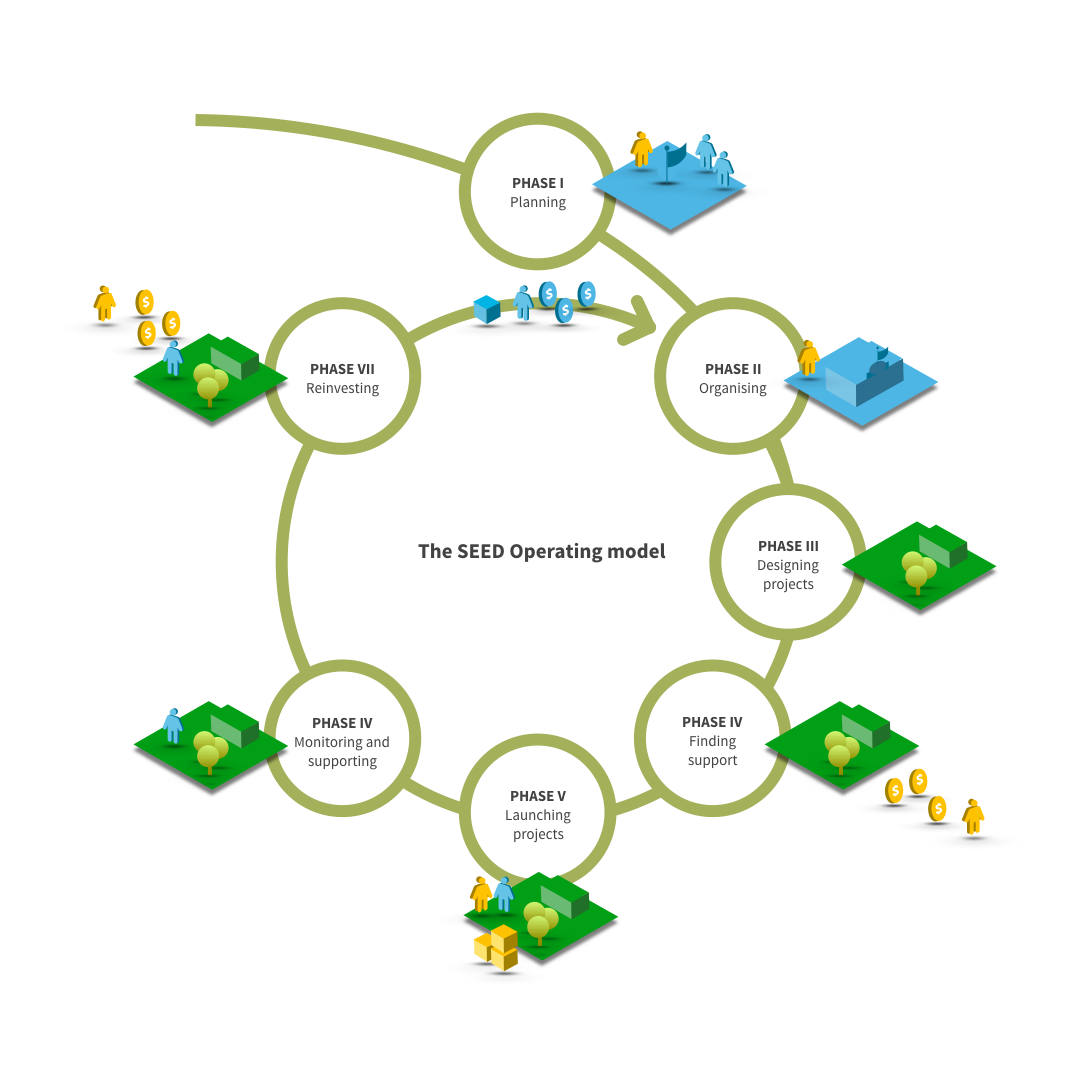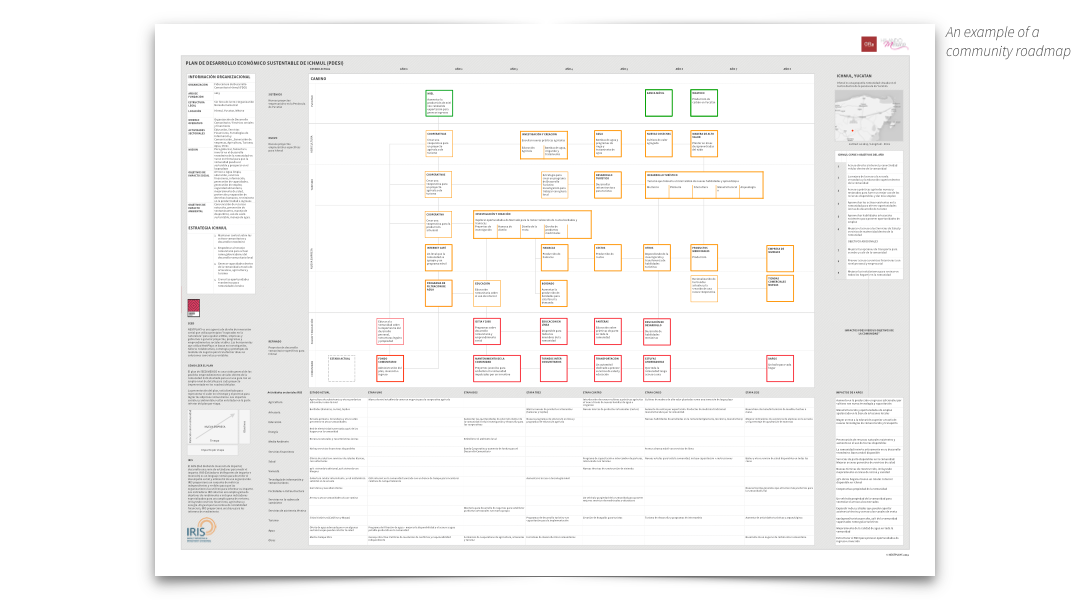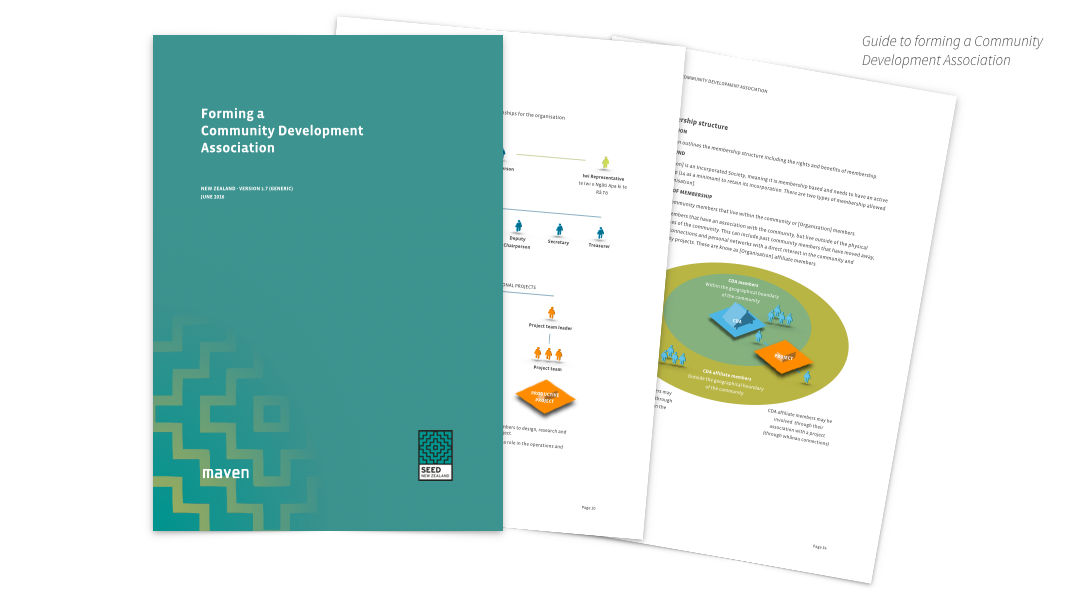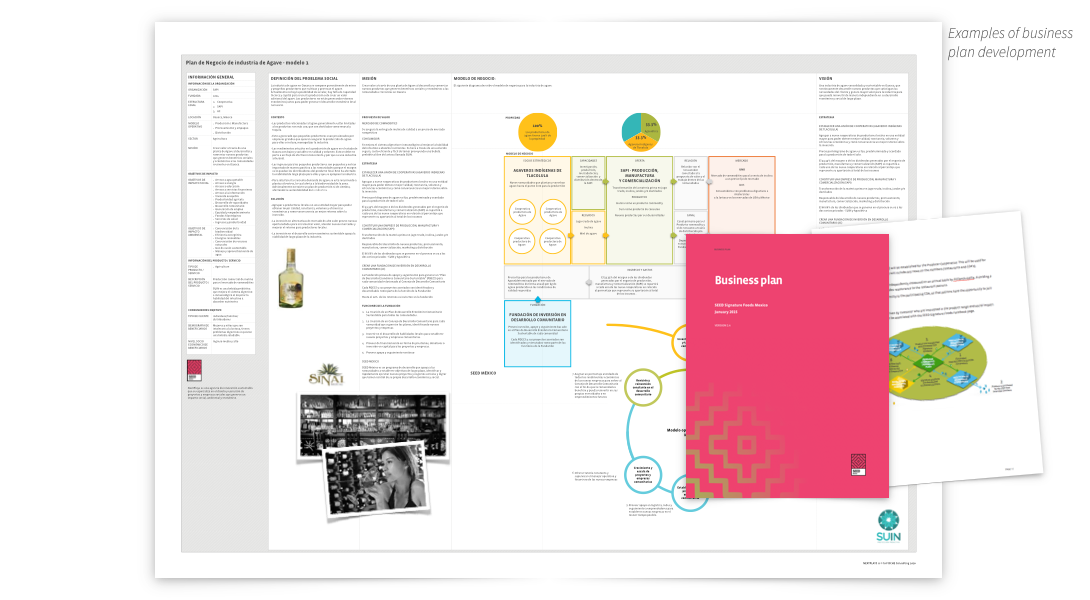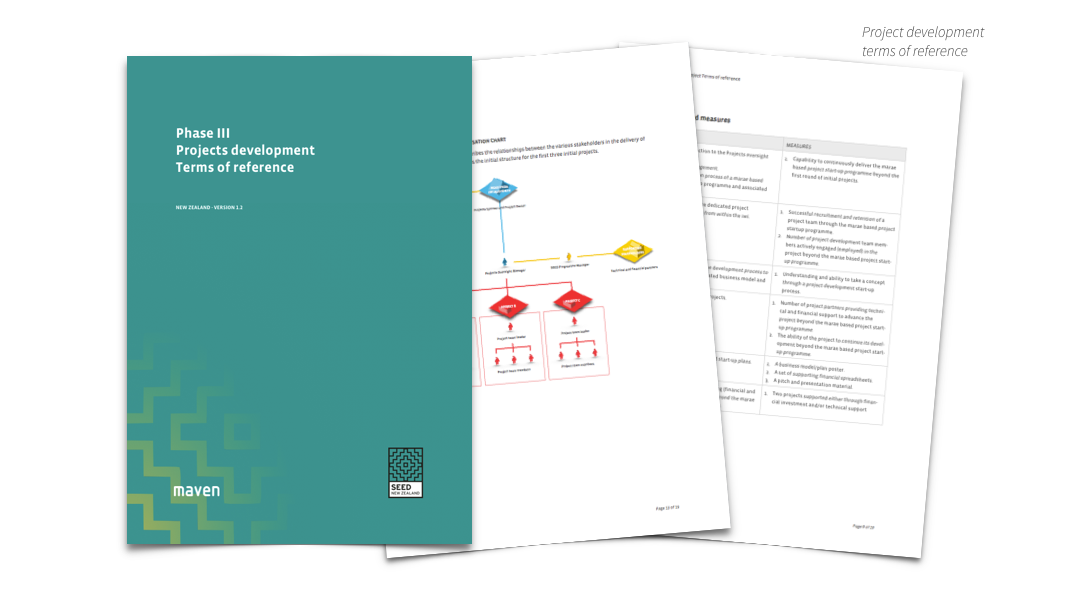SEED Programme Phases
SEED is broken into seven phases, each phase has its own activities, outputs and outcomes. The intent is to create a virtual circle so the impacts and benefits of all community inspired projects support future projects.
Phase I - Planning
Working with the community to deliver a community roadmap that links local projects to the long term aspirations of the community.
ACTIVITY
- Delivering a community presentation on the programme to build support and seek validation to continue.
- Undertaking desk research to build an understanding of the region the community occupies.
This can includes its geography, cultural history, society etc so the SEED team has an understanding before entering the community. - Living within the community for a number of weeks to undertake field research, carry out interviews and develop insights and ideas.
- Opening communications channels with the community.
- Facilitating community workshops, including:
- Agreeing a set of long-term community development objectives and aspirations.
- Identifying assets and conceptualising a number of potential social, productive and commercial projects.
- Creating a community roadmap and presenting this to the community for addition, revision and confirmation.
DELIVERABLES
- A single page poster community roadmap that identifies:
- The organisation structure and strategy for the roadmap.
- An agreed set of community inspired long term objectives.
- A set of linked social, productive and commercial projects that help to deliver on these objectives.
- An indicator framework and assumed impacts should the projects be delivered.
- A presentation and short report that details the community roadmap.
- A project recommendation report.
Phase II - Organising
Working with community members to provide information on governance structures, operational structures and project management training to get the structures in place to move things forward.
ACTIVITY
- Delivering a presentation and workshop on forming a Community Development Association.
- Facilitating a workshop on the basics of project management and how to develop a project plan.
- Providing mentoring and support to help the community advance its organisation and project management.
- Making recommendations and introductions to professional networks.
DELIVERABLES
- A workshop and a 68 page guide to setting up a Community Development Association that details how to set up an new organisation (Trust or Society), organisational structures, community membership, measurement, financial structures and associated templates.
- A guide to setting up a new project and recruiting project teams.
- A workshop and guide to project management and associated templates.
Phase III - Designing projects
Moving multiple projects from ideas to plans by inviting potential partners to support community projects and delivering a new project startup programme to develop viable new enterprise plans.
ACTIVITY
- Facilitating a one day multi-stakeholder workshop to cooperatively explore six associated projects and develop an action list to move those projects forward.
- Providing mentoring and support to help the community advance the multi-stakeholder project plans.
- Facilitating three multi-day start up labs to move project concepts to validated business models and plans including:
- Learning, designing and prototyping business models based on the initial project concept. Researching and iterating the business model to validate its viability as a project. Pitching and learning from potential support partners and funders.
- Creating business models and plans.
DELIVERABLES
- A project terms of reference document and plan for each project associated with the multi-stakeholder workshop.
- Multi-day start up labs workshop guide.
- A single page poster business plan from the multi-day start up labs including:
- Project structure, plan and organisation.
- The value proposition, offer and key attributes.
- The customer.
- The marketing approach (attracting and retaining customers).
- The revenue model.
- The operational model.
- Financial projections.
- Business assessment and risks.
- Impact assessment and benefit to the community.
Phase IV - Building support
Sourcing the resources to support new projects and enterprises, and host SEED community networking events to share roadmaps, projects and build collective support.
ACTIVITY
- Delivering a hybrid impact assessment report that links the financial, new capabilities and support for every new project to the desired impacts wanted by the community.
- Advocating for community projects, presenting and introducing a variety of partners, grant funders and investors to support new projects.
- Developing relationship agreements (Memoranda of Understanding (MOU), contracts and variable suspensory loans (VSL)) between the community organisation and the funding partners.
- Providing opportunities for the community to attend regular networking events with other SEED communities to share learning and find opportunities for collaboration and project expansion. This includes introductions to new networks and potential partners.
DELIVERABLES
- A hybrid impact assessment report.
- Project pitches.
- Access to SEED community networking events.
- Prepared MOUs, contracts and VSL agreements.
Phase V - Launching projects
Work alongside project teams with mentoring and hands on support to get the startup projects operational as quickly as possible.
ACTIVITY
- Working alongside the project teams to:
- Provide encouragement and mentoring.
- Co-design organisational structures, process and procedures to help the start-up function.
- Prototype product ideas.
- Develop experience models.
- Undertake user testing.
- Finding partners to support new venture.
- Provide external oversight of the project development and making sure the project teams are working to the agreed project plan and not deviating or adding additional elements that add cost, complexity or delays.
- Working alongside the projects oversight manager to track the progress of project development.
DELIVERABLES
- Viable projects to the point of startup.
- Project tracking reports.
Phase VI - Monitoring & Supporting
Additional phase to support the community to move forward
ACTIVITY
- Providing independent quarterly monitoring and reporting on the social, environmental and economic progress of the Community Development Association.
- Providing a report to funders and other stakeholders on the progress.
DELIVERABLES
- An independent quarterly monitoring on the social, environmental and economic progress of the Community Development Association.
PHASE VII - Reinvesting the Benefits
Additional phase to support the community to move forward
ACTIVITY
-
Collaborating with the Community Development Association to agree new projects based on the success of past projects.
-
Making recommendations for advancing more projects including:
-
Repeating the facilitation (if needed) of the one day multi-stakeholder workshop to cooperatively explore six new projects.
-
Repeating the facilitation (if needed) of the three multi-day start up labs to move new project concepts to validated business models and plans.
-
DELIVERABLES
-
An independent monitoring and reporting on the current projects and their impact on the Community.
The Operating Model
